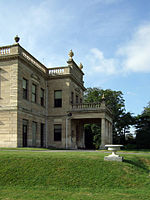Bilham Sand Pits
Sites of Special Scientific Interest in South YorkshireSites of Special Scientific Interest notified in 1987South Yorkshire
Bilham Sand Pits (grid reference SE487066) is a 0.2 hectare (0.1 acre) geological site of Special Scientific Interest in South Yorkshire. The site was notified in 1987.
Excerpt from the Wikipedia article Bilham Sand Pits (License: CC BY-SA 3.0, Authors).Bilham Sand Pits
Bilham Lane, Doncaster Hooton Pagnell
Geographical coordinates (GPS) Address Nearby Places Show on map
Geographical coordinates (GPS)
| Latitude | Longitude |
|---|---|
| N 53.553967 ° | E -1.264054 ° |
Address
Bilham Lane
Bilham Lane
DN5 7BN Doncaster, Hooton Pagnell
England, United Kingdom
Open on Google Maps











